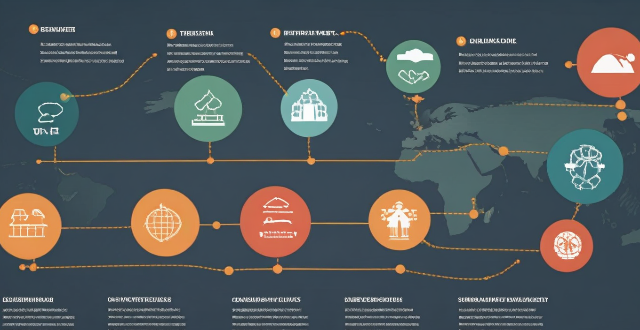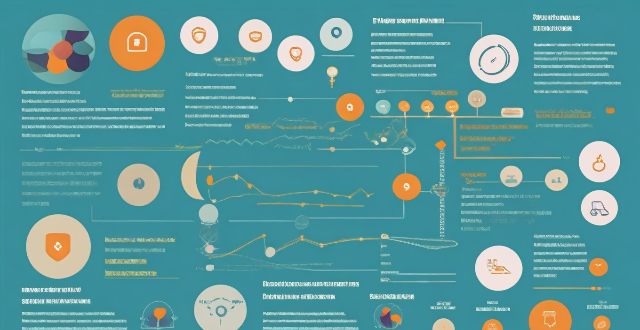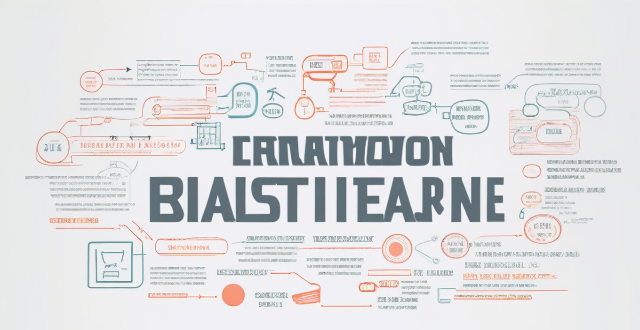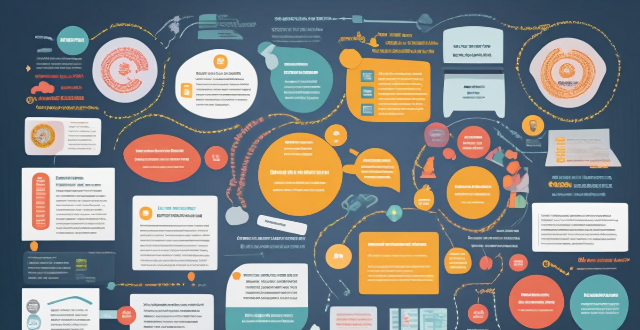Reporting Stakeholder

What are the most common ESG reporting frameworks used by companies ?
The Global Reporting Initiative (GRI) is a widely used sustainability reporting framework that provides a standardized approach for companies to report on their economic, environmental, and social performance. The GRI consists of several standards, including those related to disclosure principles, management approach, economic performance, environmental performance, social performance, governance, non-financial information disclosure, reporting principles, boundaries, guidelines, content, quality, frequency, language, format, timeframe, period, entities, scope, limitations, assurance, certification, training, tools, collaboration, innovation, stakeholder engagement, data quality, impact assessment, risk management, performance indicators, materiality analysis, and stakeholder engagement process. These standards help organizations prepare high-quality GRI reports that are accurate, reliable, and consistent across different organizations and sectors.

How does TCFD align with other global reporting initiatives like the Global Reporting Initiative (GRI) ?
The Task Force on Climate-related Financial Disclosures (TCFD) and the Global Reporting Initiative (GRI) are two global sustainability reporting frameworks that share several key points of alignment. Both provide guidelines for companies to report on their sustainability performance, with TCFD focusing specifically on climate-related financial disclosures and GRI covering a broader range of sustainability issues. They also emphasize the importance of materiality assessment, stakeholder engagement, risk management, and climate change disclosures in determining which aspects are most relevant to an organization's business model and strategy. By following both frameworks, companies can provide a more comprehensive picture of their sustainability performance and demonstrate their commitment to addressing climate change and other sustainability issues.

How does TCFD differ from other sustainability reporting frameworks ?
The Task Force on Climate-related Financial Disclosures (TCFD) is a unique sustainability reporting framework that focuses specifically on the financial risks and opportunities associated with climate change. It differs from other frameworks such as the Global Reporting Initiative (GRI) and the Sustainability Accounting Standards Board (SASB) in several key ways, including its exclusive focus on climate change, emphasis on financial implications, stakeholder engagement, specific recommendations for reporting, and integration with financial reporting. TCFD's approach helps companies effectively communicate their climate-related financial risks and opportunities, making it a valuable tool for navigating the complexities of climate change and its potential impact on their bottom line.

What are the best practices for businesses to report on their environmental impact as part of their CSR initiatives ?
Reporting on environmental impact is crucial for businesses as part of their CSR initiatives. Best practices include setting clear objectives and goals, collecting relevant data, analyzing environmental footprint, developing an action plan, communicating findings, encouraging stakeholder engagement, and continuously improving the reporting process. By following these steps, businesses can demonstrate their commitment to sustainability and transparency while providing valuable information to stakeholders about their environmental performance.

What is the significance of ESG for stakeholder management ?
This article discusses the importance of ESG factors for stakeholder management. Environmental factors such as climate change and resource depletion, social factors such as labor practices and community relations, and governance factors such as board diversity and anti-corruption policies are all crucial for companies to consider in order to enhance their reputation, build stronger relationships with their stakeholders, and ensure the long-term viability of their operations. By incorporating ESG principles into their stakeholder management strategies, companies can demonstrate their commitment to sustainability and responsibility, which is increasingly important in today's business environment.

What is the role of public participation and stakeholder engagement in the development of climate and environmental policies ?
The article discusses the importance of public participation and stakeholder engagement in developing climate and environmental policies. It highlights that these processes enhance transparency, build consensus, provide local knowledge, identify gaps and priorities, promote equity and fairness, facilitate implementation and compliance, and promote innovation. Overall, involving a diverse range of stakeholders in the policy-making process leads to more effective, equitable, and sustainable solutions to environmental challenges.

What ethical considerations should be taken into account when reporting on athletes' personal lives ?
The text discusses ethical considerations in reporting athletes' personal lives, emphasizing respect for privacy, accuracy and fairness, consent and participation, handling sensitive topics with care, public interest, age and maturity, cultural sensitivity, and aftermath support. It suggests that journalists should avoid intrusion, verify information, ask for permission, handle sensitive topics with care, consider age and maturity, recognize cultural differences, provide resources for support, and follow up responsibly. The text concludes that reporting on athletes' personal lives requires a nuanced approach that prioritizes ethics over sensationalism to maintain integrity while informing the public about the human aspects of sports figures they admire.

What is the relationship between ESG and corporate governance ?
The article explores the relationship between Environmental, SocialThe article explores the relationship between Environmental, Social (ESG) factors and It states that ESG is often considered a subset of corporate governance and focuses on specific aspects of how a company operates. Companies that prioritize ESG factors tend to have stronger corporate governance structures in place. The role of boards in overseeing a company's ESG initiatives is also discussed. Regulations and stakeholder pressure are driving the need for effective corporate governance. Best practices for integrating ESG into corporate governance include defining clear objectives, regular reviews, stakeholder engagement, and maintaining transparency and accountability.

What role do stakeholders play in shaping a company's CSR strategy ?
The text is a summary of the key points on the role of stakeholders in shaping a company's Corporate Social Responsibility (CSR) strategy. Stakeholders, including customers, employees, suppliers, shareholders, communities, government agencies, and non-governmental organizations (NGOs), are crucial in identifying and analyzing their interests, needs, and expectations. Companies need to communicate openly and regularly with their stakeholders to gather feedback and build trust. Collaboration and partnerships with stakeholders on CSR projects help achieve shared goals and strengthen relationships. Accountability and transparency are essential for companies to act responsibly and ethically. Continuous improvement is necessary based on stakeholder feedback. Risk management involves stakeholders in risk assessment and management processes. Legal and ethical obligations must be considered when developing CSR strategies. Innovation and sustainability can be driven by stakeholder input. A strong CSR strategy enhances brand reputation and loyalty. Long-term success can be ensured by involving stakeholders in shaping CSR strategy.

How does TCFD affect corporate reporting ?
The Task Force on Climate-related Financial Disclosures (TCFD) has significantly impacted corporate reporting by requiring enhanced disclosure of climate-related risks and opportunities. Companies must identify, assess, and manage these risks, including through scenario analysis and governance processes. They also need to disclose how climate change affects their business model and strategy, as well as the alignment of their portfolio with a low-carbon transition. Operational performance metrics such as emissions data and energy use must be reported, along with information on positive impacts and innovation related to climate action. Overall, the TCFD guidelines aim to promote transparency and encourage companies to integrate sustainability into their financial decision-making processes.

What role does technology play in improving environmental monitoring ?
Technology plays a pivotal role in enhancing environmental monitoring by enabling advanced data collection, analysis, visualization, reporting, and conservation efforts. Satellite imagery, drone surveillance, sensor networks, big data analytics, GIS, real-time reporting systems, and early warning technologies are among the key tools used. These advancements not only improve our understanding of environmental changes but also aid in managing resources and raising public awareness about ecological issues.

What challenges do companies face while implementing TCFD disclosures ?
The text discusses the challenges that companies face in implementing TCFD disclosures. These challenges include data availability and quality, technical expertise and capacity, regulatory and legal requirements, stakeholder engagement and communications, and integrating TCFD into business strategies. Companies need to address these challenges by building capacity, improving standards, and enhancing transparency around climate-related risks and opportunities.

What are the key recommendations of TCFD for companies ?
The Task Force on Climate-related Financial Disclosures (TCFD) offers a framework for companies to report on their climate-related risks and opportunities. Key recommendations include identifying and assessing physical, transition, and liability risks; disclosing risk management strategies, mitigation measures, and monitoring systems; identifying market, technological innovation, and brand value enhancement opportunities; capturing business model changes, investments in low-carbon technologies, and collaborative partnerships; using consistent methodologies with standardized metrics, scenario analysis, and third-party verification; and engaging stakeholders through surveys, public forums, and transparent reporting processes.

How do investors evaluate a company's CSR performance related to climate change when making investment decisions ?
When making investment decisions, investors consider a company'When making investment decisions, investors consider a company' Responsibility (C investors consider a company's Corporate Social Responsibility (CSR) performance related to climate change. The article discusses how investors evaluate a company's CSR performance related to climate change when making investment decisions. The first step in evaluating a company's CSR performance related to climate change is to assess its environmental impact. Investors look at the company's carbon footprint, energy consumption, waste management practices, and other environmental metrics to determine its impact on the environment. Companies with lower carbon emissions and better waste management practices are considered more sustainable and attractive to investors. Investors also evaluate a company's sustainability reporting practices. Companies that provide detailed reports on their environmental impact, social responsibility initiatives, and governance practices are seen as more transparent and accountable. Another important factor that investors consider is a company's use of renewable energy sources. Companies that rely heavily on fossil fuels for their operations are considered less sustainable than those that use renewable energy sources such as solar or wind power. Carbon offsetting programs are another way that companies can demonstrate their commitment to reducing their carbon footprint. Finally, investors evaluate a company's stakeholder engagement practices related to climate change.

What are the potential risks and challenges associated with implementing CSR initiatives ?
Implementing Corporate Social Responsibility (CSR) initiatives can bring benefits to a company, but also comes with potential risks and challenges. These include lack of clear goals and objectives, limited resources, stakeholder pressure, legal and regulatory issues, difficulty measuring impact, and potential backlash from stakeholders. Companies need to carefully consider these issues before committing to CSR efforts, and should work to mitigate any potential risks through careful planning and execution.

How can businesses measure and report their environmental performance throughout their supply chains ?
Measuring and reporting environmental performance in supply chains involves setting clear objectives, conducting a baseline assessment, developing an action plan, implementing and monitoring progress, and reporting performance transparently. Adopting standardized metrics, engaging stakeholders, and continuously improving are best practices to effectively manage environmental impact throughout the supply chain.

What role does media coverage play in shaping public opinion on climate skepticism ?
The text discusses the role of media coverage in shaping public opinion on climate change and climate skepticism. It highlights the influence of biased reporting, sensationalism, balanced coverage, source credibility, and audience perception on how individuals form their beliefs and attitudes towards these issues. The text emphasizes the importance of accurate, balanced, and transparent reporting by media outlets to ensure that the public is well-informed and able to make informed decisions based on evidence.

What are the legal obligations for companies regarding their carbon footprint ?
Companies face various legal obligations concerning their carbon footprint aimed at reducing greenhouse gas emissions and mitigating climate change. These include mandatory and voluntary emissions reporting, regulatory compliance through emissions caps and permitting, corporate governance measures like board oversight and stakeholder engagement, financial responsibilities such as carbon taxes and trading schemes, commitments under international agreements, and potential civil liabilities for negligence or human rights violations related to pollution. Companies must take proactive steps to reduce emissions, engage stakeholders, and contribute positively to global climate action, with specific requirements depending on the jurisdiction, industry, and individual company's commitments.

Why is it important to use a carbon footprint calculator for individuals and businesses ?
The importance of using a carbon footprint calculator is highlighted for individuals and businesses. For individuals, it helps in understanding personal impact, raising awareness, motivating behavior change, setting goals, and contributing to global efforts. For businesses, it aids in corporate responsibility, cost savings, compliance and reporting, enhancing brand image, stakeholder engagement, risk management, and innovation. Using a calculator empowers both to make informed decisions for a sustainable future.

What are the main challenges faced by companies in implementing ESG strategies ?
Companies face challenges in implementing ESG strategies, such as lack of clear guidelines and standards for measuring performance, integrating ESG into business strategy, managing stakeholder expectations, navigating regulatory compliance, and managing ESG-related data.

What are some best practices for managing risk associated with climate change in a global supply chain ?
This article outlines best practices for managing risk associated with climate change in a global supply chain. It suggests assessing climate change risks by identifying potential impacts and evaluating vulnerabilities, developing a risk management plan that includes setting clear objectives and implementing mitigation measures, and monitoring and reviewing performance through tracking progress against objectives and continuously improving strategies. Key strategies include diversifying supplier networks, investing in resilient infrastructure, improving energy efficiency, enhancing supply chain transparency, promoting sustainable practices, establishing regular reporting processes, benchmarking against industry standards, soliciting stakeholder feedback, revising risk management plans regularly, participating in collaborative learning opportunities, and fostering a culture of innovation within the organization.

How can businesses incorporate climate action into their operations ?
Incorporating climate action into business operations is a multifaceted approach that involves strategic planning, process optimization, and continuous improvement. This comprehensive guide outlines key steps businesses can take to integrate sustainable practices into their operations. The urgency of addressing climate change has become a global imperative. Businesses play a pivotal role in this transition, as they are not only significant contributors to greenhouse gas emissions but also hold the potential to drive innovation and implement sustainable solutions. Strategic Planning - Set Clear Objectives - Conduct an Environmental Audit Operational Optimization - Energy Management - Waste Reduction - Water Stewardship - Sustainable Transportation Continuous Improvement - Employee Training and Engagement - Stakeholder Engagement - Innovation and Research - Reporting and Transparency Integrating climate action into business operations demands a proactive and strategic approach. By setting clear objectives, optimizing operations, engaging stakeholders, and continuously improving, businesses can significantly reduce their environmental footprint while contributing positively to the global effort against climate change.

How do TCFD disclosures improve transparency and accountability in business practices ?
The Task Force on Climate-related Financial Disclosures (TCFD) was established by the Financial Stability Board (FSB) to develop a framework for companies to disclose information about their impact on, and from, climate-related risks. These disclosures play a crucial role in enhancing transparency and accountability in business practices. By adhering to TCFD recommendations, businesses are compelled to communicate openly about their strategies and plans related to climate change. This includes identifying and explaining the potential impact of climate change on their operations and disclosing any financial risks or opportunities that may arise due to climate change. Investors increasingly demand clarity on how companies are addressing climate change. TCFD disclosures provide this clarity, fostering trust among investors and other stakeholders. The TCFD framework sets clear benchmarks for disclosure, making it easier for stakeholders to assess a company’s performance against industry standards. This promotes comparative analysis and performance evaluation. As the TCFD gains momentum, companies are incentivized to comply not just for regulatory reasons, but also to maintain their reputation and competitive edge in the market. Knowing they must report on climate-related matters can push companies to innovate, seeking new ways to reduce environmental impacts and adapt to climate risks. With TCFD disclosures, companies are prompted to consider long-term implications of their actions, leading to more sustainable business models. The disclosures align businesses with the United Nations Sustainable Development Goals (SDGs), particularly those related to climate action and life on land. TCFD provides a global standard for reporting, ensuring that companies operating across multiple jurisdictions can be assessed consistently. Through TCFD disclosures, companies can share successful strategies and practices related to climate risk management, fostering a collaborative approach to addressing climate change. Disclosures can reveal areas where companies might need partners—whether in technology, research, or other sectors—to achieve their climate goals.

How can companies improve their ESG scores ?
Improving a company's Environmental, Social, and Governance (ESG) scores requires a comprehensive approach to business operations that emphasizes sustainability, ethical behavior, and transparency. Strategies for enhancing each aspect of the ESG framework are outlined in this guide. In the environmental dimension, companies should reduce their carbon footprint through energy efficiency, renewable energy, and green buildings; implement sustainable sourcing practices such as supply chain audits and resource stewardship; and manage waste through recycling programs and hazardous waste disposal. In the social dimension, workplace standards should be established, including fair wages, diversity and inclusion, and health and safety measures. Community engagement should also be prioritized through local investment, volunteerism, and transparency. Consumer protection is another key area, with product safety, privacy, and customer service being important considerations. In the governance dimension, board diversity and independence should be ensured through independent directors, committees, and ethical conduct policies. Transparency and accountability should also be maintained through regular ESG reporting, stakeholder engagement, and third-party audits. By focusing on these key areas, companies can improve their ESG scores and enhance their reputation, investor confidence, and long-term financial performance.

How does climate change legislation influence corporate sustainability practices ?
Climate change legislation significantly influences corporate sustainability practices by setting standards for environmental responsibility. It compels companies to report on their environmental impact, use market-based mechanisms like cap-and-trade systems, and consider tax incentives or penalties in their operations. This legislation also creates investor pressure through ESG criteria and shareholder resolutions, leading companies to enhance their sustainability practices to meet investor expectations. Additionally, it opens market opportunities for green products and services and encourages renewable energy adoption. Companies that comply with climate legislation can improve their brand image and stakeholder engagement. Furthermore, such legislation aids in risk management by requiring companies to assess physical and transition risks associated with climate change. Overall, climate change legislation is a driving force behind corporations adopting more sustainable practices.

What role do carbon offsets play in a company's CSR approach to addressing climate change ?
**Summary:** The text discusses the role of carbon offsets in corporate social responsibility (CSR) strategies aimed at mitigating climate change. Carbon offsets, defined as investments in emission reduction projects that go beyond legal requirements, help companies counterbalance their operational emissions. Implementing carbon offsets can aid companies in achieving emission reduction targets, investing in sustainable projects, engaging stakeholders, managing risks related to environmental regulations, and fostering innovation. Key steps in implementing a carbon offsetting program include conducting an emission audit, selecting suitable offset projects, integrating offsets into the business model, ensuring transparency in reporting, and engaging stakeholders. By incorporating carbon offsets into their CSR strategies, companies can contribute to combating climate change while enhancing their reputation and potentially reaching new markets.

How has the COVID-19 pandemic affected ESG priorities for businesses ?
The COVID-19 pandemic has significantly impacted businesses worldwide, affecting their operations, financial performance, and strategic priorities, particularly in the area of Environmental, Social, and Governance (ESG) priorities. The pandemic has led to an increased focus on sustainability, a shift towards remote work, health and safety concerns, mental health support, transparency and accountability, and stakeholder engagement. To address these challenges, businesses should conduct a comprehensive ESG assessment, develop a sustainability strategy, implement health and safety measures, offer mental health support, increase transparency and accountability, and engage with stakeholders. By taking proactive steps to address these challenges, businesses can improve their ESG performance and build resilience and adaptability in the face of future crises.

How can we measure the effectiveness of resource-efficient utilization initiatives ?
Measuring the effectiveness of resource-efficient utilization initiatives is crucial for organizations and governments aiming to reduce waste, save costs, and minimize environmental impact. This process involves evaluating the outcomes of various initiatives designed to optimize resource use and comparing them against predefined goals or benchmarks. Here's a detailed approach to measure the effectiveness of such initiatives: 1. Define Key Performance Indicators (KPIs): Identify relevant KPIs such as resource consumption rates, cost savings, waste reduction, productivity metrics, and environmental impact. 2. Establish Baseline Data: Gather historical information on resource consumption, costs, waste levels, and productivity prior to the implementation of the initiatives. Note any external factors that might affect the baseline data. 3. Implement Monitoring Systems: Set up data collection methods such as automated tracking using technology like smart meters or IoT devices, regular audits, and employee feedback. 4. Analyze Results and Compare to Baseline: Evaluate performance against KPIs by analyzing collected data and identifying trends and anomalies. Compare the post-implementation data with the baseline to gauge improvements or setbacks. Create charts and graphs to visually depict the changes over time. 5. Report Findings and Recommendations: Compile detailed reports outlining the findings from the analysis phase. Based on the results, suggest adjustments to current practices or propose new initiatives. Share the reports with relevant stakeholders, including management, employees, and regulatory bodies. 6. Continuous Improvement: Iterate and optimize initiatives through a feedback loop mechanism for continuous feedback from all involved parties. Revise strategies based on performance data and stakeholder input. Integrate lessons learned into long-term sustainability plans. In conclusion, measuring the effectiveness of resource-efficient utilization initiatives requires a structured approach that includes defining clear KPIs, establishing baseline data, implementing monitoring systems, analyzing results, reporting findings, and committing to continuous improvement. By following these steps, organizations can ensure that their efforts to utilize resources efficiently are not only successful but also measurable and sustainable over time.

How can TCFD disclosures help in attracting responsible investments ?
The Task Force on Climate-related Financial Disclosures (TCFD) was established by the Financial Stability Board (FSB) to develop voluntary, consistent global climate-related financial risk disclosures. These disclosures provide investors with a clearer understanding of how companies are managing climate-related risks and opportunities, which can help attract responsible investments. Here's how: ## Clarity in Risk Management ### **Enhanced Transparency** TCFD disclosures require companies to clearly outline their strategies for managing climate-related risks. This transparency allows investors to assess the effectiveness of a company's risk management practices and make informed investment decisions. ### **Risk Identification** Companies must identify and report on the specific climate-related risks they face, such as physical impacts from extreme weather events or transition risks associated with policy changes. This information helps investors evaluate potential impacts on future earnings and cash flows. ## Alignment with Sustainable Goals ### **ESG Criteria** Environmental, social, and governance (ESG) criteria are becoming increasingly important to investors. TCFD disclosures provide detailed information on environmental aspects, helping investors gauge a company's commitment to sustainability. ### **Strategic Alignment** Companies that integrate climate risks into their strategic planning demonstrate a proactive approach to sustainability. This alignment with long-term sustainable goals can be attractive to responsible investors seeking to support businesses committed to positive environmental impacts. ## Performance Tracking ### **Progress Metrics** TCFD recommendations include reporting on metrics that track progress towards managing climate risks. These metrics allow investors to monitor a company's performance over time and assess its ability to adapt and thrive in a changing climate. ### **Scenario Analysis** Companies are encouraged to provide scenario analyses showing potential financial impacts under different climate scenarios. This forward-looking information is crucial for investors looking to understand how a company might perform under various climate change outcomes. ## Stakeholder Engagement ### **Active Dialogue** TCFD disclosures often involve engaging with stakeholders, including investors, on climate-related issues. This active dialogue fosters trust and can lead to more collaborative relationships between companies and investors focused on responsible investing. ### **Feedback Integration** By incorporating feedback from stakeholders, including investors, companies can improve their disclosures and strategies, further aligning themselves with the expectations of responsible investment communities. ## Long-Term Value Creation ### **Sustainable Business Models** TCFD disclosures encourage companies to consider how they can create long-term value by embracing sustainable business models. Investors looking for responsible investments are likely to be drawn to companies that demonstrate a commitment to sustainability and resilience. ### **Innovation Opportunities** Disclosures also highlight areas where climate change presents opportunities for innovation and growth. Responsible investors may see these opportunities as promising avenues for investment, particularly in sectors like clean energy or green technologies.

How does TCFD help in managing climate-related risks ?
The Task Force on Climate-related Financial Disclosures (TCFD) is a global initiative aimed at helping companies manage climate-related risks through consistent disclosure. The TCFD framework guides businesses in identifying and assessing these risks, integrating them into business planning, ensuring transparency through reporting and disclosure, conducting scenario analysis and stress testing, and recognizing potential opportunities arising from the transition to a low-carbon economy. By following this structured approach, companies can protect themselves from negative impacts of climate change and position themselves advantageously in emerging markets related to climate solutions.